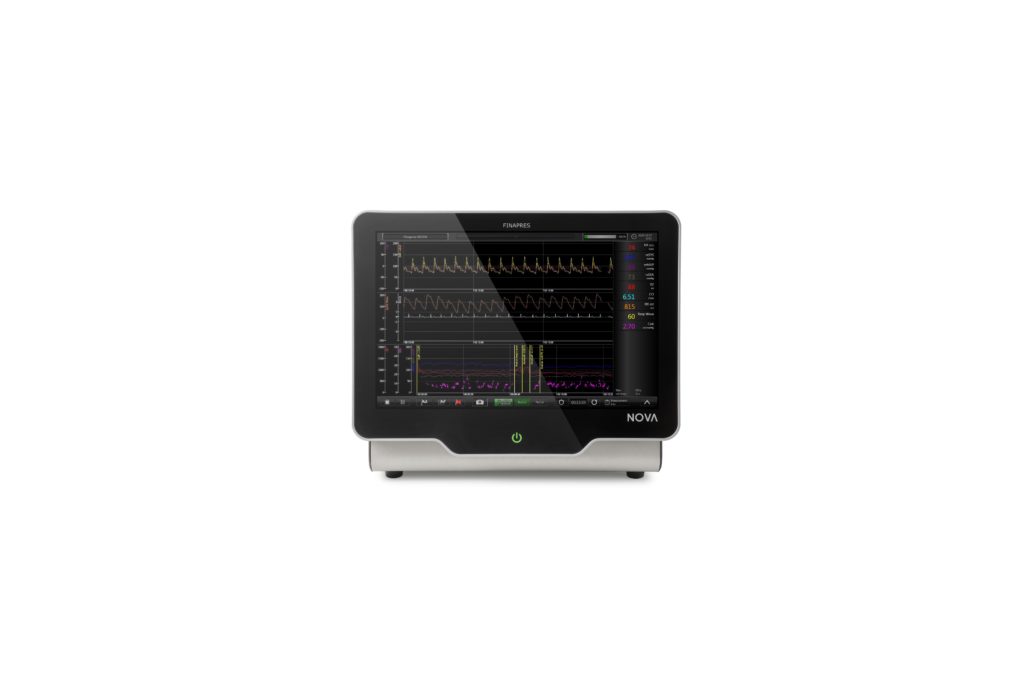Why ALS Needs More Research
Read our blog post to learn more about the diagnosis, scientific research and pathways of ALS.
“How Can We Contribute to the Fight Against ALS?”
Date: 5th December 2023 Reading time: 3-4 mins Author: Frauke Luft, PhDDegeneration of motor neurons. Motor neuron diseases are a group of neurodegenerative disorders including amyotrophic lateral sclerosis, progressive bulbar palsy and other.
Why ALS Needs More Research
In this blog post, we write about autonomic dysfunctions in patients with ALS.
The key discussion points are:
- Cardiovagal dysfunction
- Cardiovascular dysfunction
- Baroreflex sensitivity
ALS: a Fatal Diagnosis
Amyotrophic Lateral Sclerosis (ALS) urgently needs a cure. ALS is a neurodegenerative disease affecting motor neurons in the brain, brainstem and spinal cord. As motor nerve cells die, signals from the brain and spinal cord no longer reach the muscles. As a result, the muscles fail one by one. After the first symptoms, patients live an average of three to four years (E.O. Talboot, 2026).
The prevalence worldwide is 4.42 per 100,000 individuals, with significant global differences (S. A. Goutman, 2022).
Over the past 15 years, much has been achieved by researching ALS and more is known about the origin(s). Researchers are getting closer and closer to understanding more about the causes and solutions. Therefore, the only way to end this deadly disease is: more scientific research into the cause and treatment of ALS.
 Source: www.als.nl
Source: www.als.nl
ALS patients in studies
Besides motor deficits, non-motor symptoms, including dysfunction of the autonomic nervous system have been studied in ALS (D. Weise, 2021). In general, studies found that autonomic dysfunction in patients with ALS are common but modest. Symptoms involving the urinary and gastrointestinal track and orthostatic intolerance were the most common ones. Sudomotor abnormalities were also seen in 46% of the patients with most often a sweat loss pattern. (E. A. Piccione, 2015)
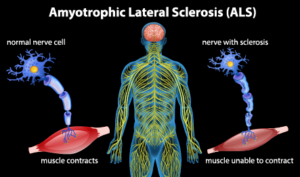
Normal nerve cells vs. nerve with sclerosis
Finapres® devices are developed for measuring and monitoring continuous blood pressure and are used in studies of the autonomic nervous system. Also, Finapres® devices are used by cardiologists, neurologists and researchers to better understand autonomic dysfunction and autonomic failure.
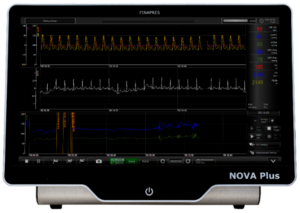
Finapres® NOVA Plus
Would you like to know more about autonomic (dys)function and ALS?
In the following paragraphs, we will outline cardiovagal and cardiovascular abnormalities and the baroreflex sensitivity in ALS patients.
Cardiovagal Abnormalities
Cardiovagal function can be evaluated by measuring the heart rate variability (HRV) during autonomic tests, such as deep breathing, the Valsalva maneuver, or tilt table testing (E. A. Piccione, 2015) (L. D. Vecchia, 2015). Reduced HRV during deep breathing was present in 86% of the patients (E. A. Piccione, 2015). Patients also lacked a physiological response to tilt (L. D. Vecchia, 2015).
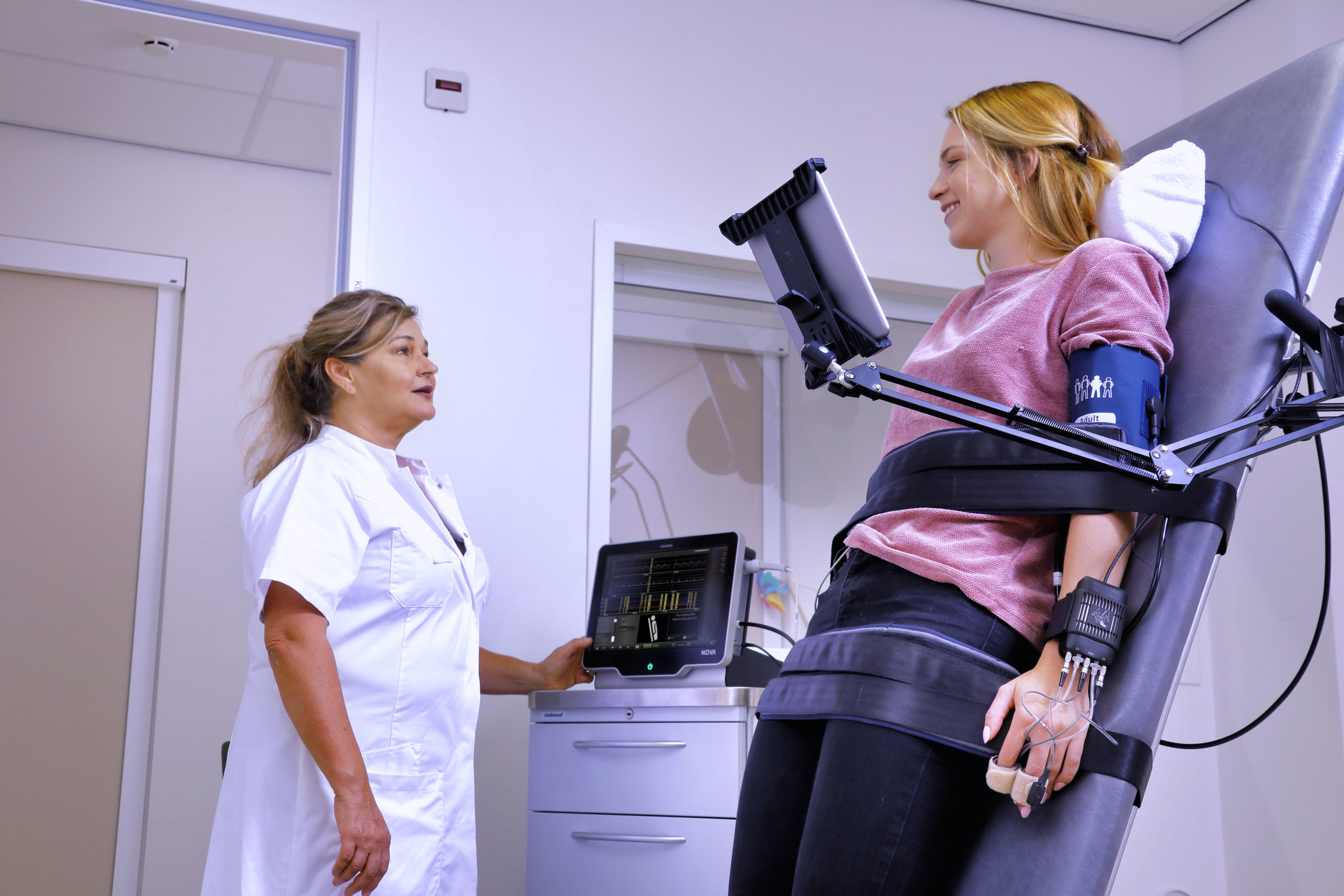 Tilt testing with the Finapres® NOVA with Guided Autonomic Testing (GAT) application
Tilt testing with the Finapres® NOVA with Guided Autonomic Testing (GAT) application
Cardiovascular Abnormalities
Changes in blood pressure during the Valsalva maneuver or tilt-table testing provide insides into the cardiovascular functions. Abnormal blood pressure responses are seen during Valsalva maneuver (55%). Furthermore, orthostatic hypotension was seen in 28% of the patients (E. A. Piccione, 2015). During rest, patients with ALS showed a higher variance in systolic blood pressure compared to healthy controls (L. D. Vecchia, 2015).
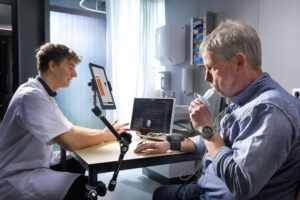 Valsalva Maneuver with the Finapres® NOVA, NANO Core and i-Pad
Valsalva Maneuver with the Finapres® NOVA, NANO Core and i-Pad
The tests mentioned here are all included in the Guided Autonomic Testing software of Finapres.
Baroreflex Sensitivity
An early study by Linden et al. (D. Linder, 1998) showed that patients with ALS have a reduced baroreflex sensitivity (BRS). The BRS is one of the many parameters provided by Finapres® Software. For more information refer to Finapres® NOVA – Hardware & Software solutions!
Different Pathways of ALS
It can be concluded that autonomic dysfunction is fairly common in patients with ALS. It is evident that more research into the different pathways of ALS is necessary to provide the best care and hopefully a future cure for each individual patient.
 Physiotherapist assisting a patient with Amyotrophic Lateral Sclerosis.
Physiotherapist assisting a patient with Amyotrophic Lateral Sclerosis.
Want to know more?
Would you like to keep updated on Finapres®? Follow us on LinkedIn and on X (former Twitter).
Do you want to read more about Finapres® devices? Read our brochures GAT and NOVA.
For more information, do not hesitate to contact us!
References
- D. Linder, R. D. (1998). Reduced baroreflex sensitivity and cardiorespiratory transfer in amyotrophic lateral sclerosis. Electroencephalography and clinical Neurophysiology, 387-390.
- D. Weise, I. M. (2021). Multimodal assessment of autonomic dysfunction in amyotrophic lateral sclerosis. European journal of Neurology, 715-723.
- E. A. Piccione, D. M. (2015). Autonomic system and amyotrophic lateral sclerosis. Muscle and Nerve, 676-679.
- E. O. Talboot, A. M. (2026). The epidemiology of amyotrophic lateral sclerosis. Handbook of clinical neurology, 225-238.
- L. D. Vecchia, B. D. (2015). Cardiovascular neural regulation is impaired in amyotrophic lateral sclerosis patients. A study by spectral and complexity analysis of cardiovascular oscillations. Physiological Measurement, 659-670.
- S. A. Goutman, O. H.-C. (2022). Recent advances in the diagnosis and prognosis of ALS. Lancet Neurology, 480-493.

